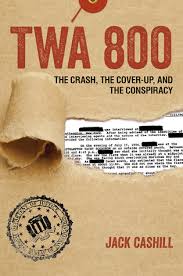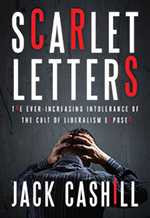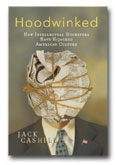The Man Who Taught Hillary How to Shred Haunts Wikileaks Dump
_____
Order Jack Cashill's latest book, TWA 800: The Crash, the Cover-Up, and the Conspiracy
______
Order Jack Cashill's book,
Scarlet Letters
___
Get your copy of Jack Cashill's book, "You Lie!"
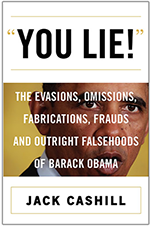
___
Get your copy of Deconstructing Obama
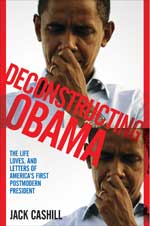
___
Jack Cashill's book:
Hoodwinked: How Intellectual Hucksters have Hijacked American Culture
© Jack Cashill
AmericanThinker.com - October 12, 2016
“Before I begin,” Hillary Clinton told an audience at the Brookings Institute in December 2015, “I want to acknowledge the loss of a beloved member of our foreign policy family, Sandy Berger.”
In fact, Berger appears repeatedly in the Wikileaks dump of emails from and to John Podesta, chairman of Hillary Clinton’s campaign. In reading through them, one gets the impression that if Berger was not an architect of the Iranian nuclear deal, he was at least a major salesman.
Hillary had good cause to praise Berger. In the run-up to the 2004 9-11 hearings, Berger taught Hillary by example that, if you were a prominent Democrat, it was possible to destroy damaging classified information and get away with it.
Like Pulp Fiction’s Winston Wolf, Berger’s job in the Clinton White House was to “solve problems.” In his first term, Clinton named Berger the deputy national security advisor job and promoted him to national security advisor in the second.
Unlike virtually all of his predecessors—Colin Powell, Zbigniew Brzezinski, Henry Kissinger— Berger, a trade lawyer and lobbyist, had no foreign policy expertise. What he did have was the president’s confidence. Clinton had entrusted the then deputy with some highly sensitive assignments, most notably the astonishingly corrupt deals with China, and Berger delivered.
In April 2002, the former president called in his chits. He designated Berger as his representative to review intelligence documents in advance of the various hearings on 9/11. As a 2007 report by the House Committee on Government Oversight and Reform specified, Berger did not welcome this assignment.
According to the archivists, Berger “indicated some disgust with the burden and responsibility of conducting the document review.” It was hard to blame him. To purge the archives of incriminating documents, Berger risked everything—his reputation, his livelihood, his very freedom.
According to the House report, Berger made four trips to the National Archives. The first of his visits was in May 2002, the last in October 2003. He clearly left his mark. “The full extent of Berger’s document removal,” said the House report, “is not known and never can be known.”
On his first day in the Archives, according to Archives staff, “Had Berger seen ‘a smoking gun’ or other documents he did not want brought to an investigatory panel’s attention, he could have removed it on this visit.”
Unlike so many career bureaucrats, Paul Brachfeld, the inspector general of the National Archives, spoke out forcefully about the criminal activity he was witnessing. Unfortunately, Brachfeld met resistance from career bureaucrats more powerful than he. On January 14, 2004, the day Berger first testified privately before the 9/11 Commission, Brachfeld conferred with DOJ attorney Howard Sklamberg.
Concerned that Berger had obstructed the 9/11 Commission’s work, Brachfeld wanted assurance that the commission knew of Berger’s crime. He did not get it. On March 22, 2004, two days before Berger’s public testimony, senior attorneys John Dion and Bruce Swartz informed Brachfeld the DOJ was not going to notify the 9-11 Commission of the Berger investigation before his appearance.
DOJ’s failure to notify the commission set up one of the most bizarre days in the annals of American history—Wednesday, March 24, 2004. Berger had already been apprehended stealing and destroying documents that the commission was expected to review. The commission members, at least the Republicans, did not know this. This much was evident in Chairman Thomas Kean’s initial exchange with Berger.
“We are pleased to welcome before the commission a witness who can offer us considerable insight into questions of national policy coordination, Mr. Samuel Berger,” said Kean. To those in the know what Kean asked next must have sounded like a punch line: “Mr. Berger, we would like to ask you to raise your right hand. Do you swear or affirm to tell the truth, the whole truth and nothing but the truth?”
On April 6, 2004, two weeks after Berger’s appearance before the 9/11 Commission, Brachfeld called DOJ’s Inspector General Glenn Fine and again expressed his concern that the commissioners remained unaware of Berger’s theft.
Fine organized a meeting for April 9. Brachfeld reported to those gathered, “Berger knowingly removed documents and therefore, may have purposely impeded the 9/11 investigation.” Some of those documents, Brachfeld added, might have been “original.”
For all of his efforts, Brachfeld was unable to persuade the DOJ to inform the 9/11 Commission of Berger’s actions. The commissioners remained in the dark until July 19, 2004, three days before the 9/11 Commission released its final report, too late for any significant amendment.
They might not have known even then had there not been a leak from somewhere in the Bush administration. At the time this story broke in July 2004, Berger was serving as a campaign advisor to Senator John Kerry.
“Last year, when I was in the archives reviewing documents, I made an honest mistake,” he lied to reporters. A year later, when Berger pled guilty, the Times wrote off the theft and the surrounding hoopla as “a brief stir” in the campaign season.
In truth, Berger’s actions were no more honest than Hillary Clinton’s a decade later. Among his more flagrantly criminal acts, Berger swiped highly classified documents, and then, during a break, stashed them under a trailer at a construction site. He retrieved them at the end of the day and admittedly used scissors to cut the documents into little pieces before throwing them away.
These repeated thefts should have caused a whole lot more than a brief stir. “His motives in taking the documents remain something of a mystery,” reported the New York Times after Berger pled guilty. How different history would have been had the Washington Post contented itself with writing, “The motives of the Watergate burglars remain something of a mystery.”
Finally, on Friday, April 1, 2005, the Bush Department of Justice announced its plea deal with Berger, an embarrassingly lenient one at that—a $10,000 fine and the loss of his top-level security clearance for three years, just in time for him to advise Barack Obama starting in 2008.
With John Ashcroft gone, it seems that the Bush White House lost control of its own Justice Department. For the record, Dion, Swartz, Sklamberg, and Fine were all holdovers from the Clinton administration. As far as I can tell, Fine, Swartz, and Sklamberg have only contributed to Democratic candidates in federal races and Dion has no record of federal contributions.
Less than a year later, Berger was back in the news. The global strategy firm over which he presided, Stonebridge International, added a new member to its advisory board. That member just happened to be the vice-chair of the 9/11 Commission, Lee Hamilton, a former congressman.
“A friend and counselor to me and to many of us, Sandy was a wise and brilliant man,” said Hilary of her departed consigliere, the man who risked his all to preserve the Clinton legacy.
On a personal note, after writing this, I have to ask, “Are there really Republicans willing to let these people back into the White House?” By the way, Tom Kean is one of them.

Jack Cashill’s newest book, TWA 800: The Crash, the Cover up, the Conspiracy can now be ordered at Amazon.

